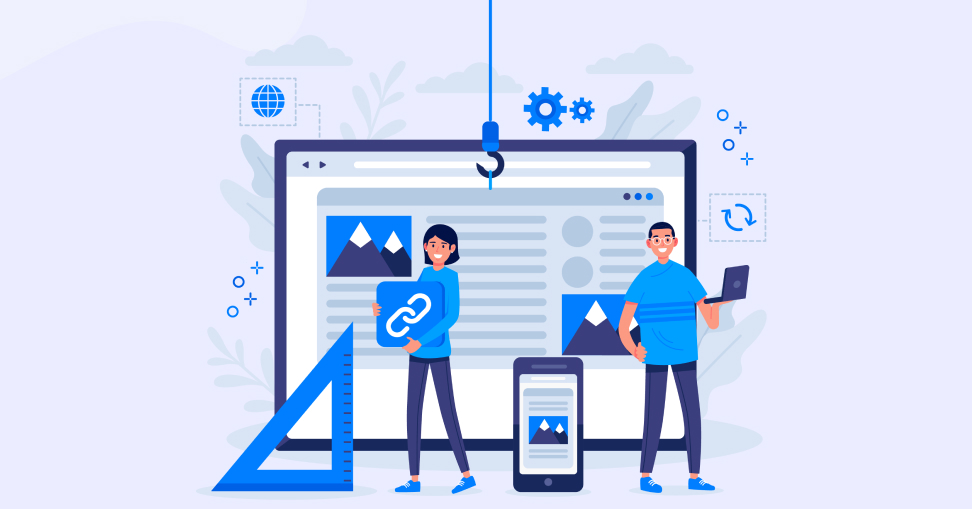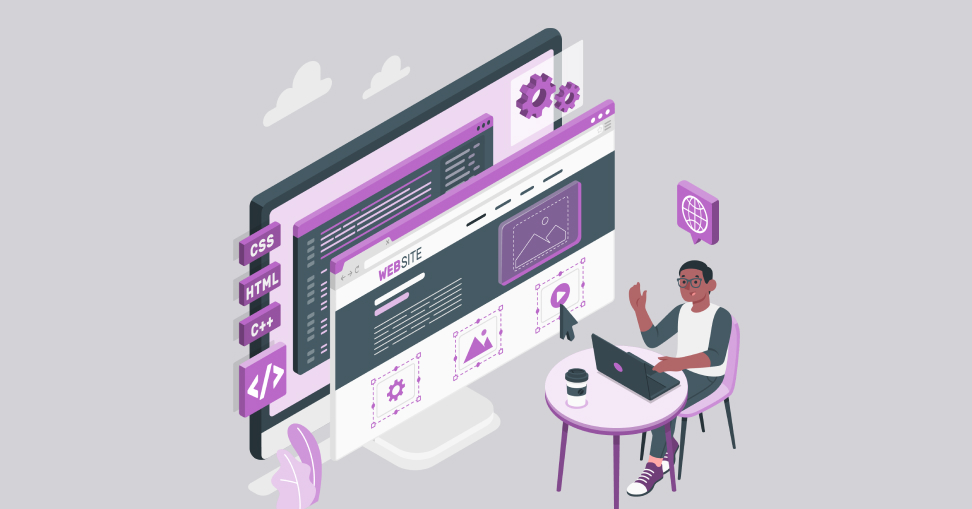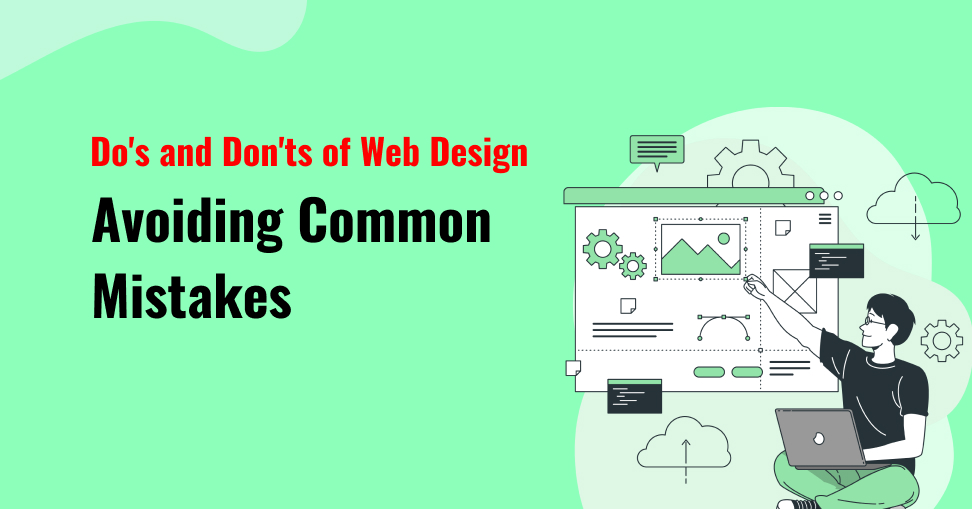Do’s and Don’ts of Web Design: Avoiding Common Mistakes
When it comes to creating a website, the design is crucial. Your website is often the first impression potential customers have of your business. A well-designed website can attract visitors and keep them engaged, ultimately leading to higher conversion rates. However, with so many factors to consider when designing a site, it’s easy to make mistakes that can hurt its effectiveness. In this article, we’ll explore the dos and don’ts of web design that every business owner should know in order to create an engaging and effective online presence for their web design company in Kolkata.
Do: Keep It Simple
When it comes to web design, simplicity is key. A simple and clean design can make your website more visually appealing and easier for visitors to navigate. One of the most common mistakes businesses make when designing a site is trying to cram too much information onto one page.
Instead, focus on creating a clear hierarchy of information that guides visitors through your site. Use headings, subheadings, and bullet points to break up text into smaller chunks and improve readability.
Another way to keep things simple is by limiting the number of colors you use on your site. Too many colors can be overwhelming and distract from the content you’re trying to convey.
Consider using plenty of white space in your web design. White space helps create an uncluttered look that’s easy on the eyes while also drawing attention to important elements like calls-to-action or images. By keeping things simple, you’ll create a website that’s more user-friendly and effective at engaging potential customers for your web design company in Kolkata.
Do: Make It Easy to Navigate
Navigating a website should be a breeze for any user, regardless of their technical ability. Therefore, making your site easy to navigate is essential in providing an optimal user experience. A cluttered and complicated navigation menu will only cause frustration and confusion for users.
One way to simplify your navigation is by using descriptive labels that are easy to understand. Avoid using jargon or confusing terminology; instead, use language that is familiar and straightforward. This approach will help visitors find what they need quickly and efficiently.
Another great tip is organizing the menu items into logical categories or groups. It helps users know where to look when searching for specific information or pages on the website.
Moreover, it’s essential always to include a search bar that allows users who want something specific can easily locate it without having to go through multiple pages manually.
Testing your website’s navigability before launching it live is crucial as this ensures that everything works correctly. Don’t make assumptions about how people interact with your navigation; instead, test different scenarios with actual users to identify potential usability issues early on in the process.

Do: Use High-Quality Images
Using high-quality images on your website is essential to creating a visually appealing experience for your visitors. When selecting images to use, always choose ones that are clear and have high resolution. Images that are blurry or pixelated can make your website look amateurish and unprofessional.
When it comes to the subject matter of the image, try to select ones that relate directly to the content they accompany. For example, if you’re writing an article about travel destinations in India, include photos of famous landmarks such as the Taj Mahal or Gateway of India.
Additionally, be mindful of copyright laws when using images from other sources. It’s important to either purchase royalty-free images or give proper credit where necessary.
Optimizing your images for web use is crucial for website speed and load times. Use tools like Photoshop or online compressors before uploading them onto your site.
Incorporating high-quality visuals can greatly enhance the user experience on your website while also making it stand out among competitors in a crowded market of web design companies in Kolkata.
Do: Use Negative Space
Using negative space in web design is a crucial technique that can enhance the overall look and feel of your website. Negative space, also known as white space, refers to the empty areas between elements on a webpage. It allows for greater emphasis on important content, making it stand out more effectively.
By using negative space strategically, you can create a clean and modern design that looks polished and professional. This technique helps to declutter your site while giving visitors the breathing room they need to focus on what’s important.
Negative space can also improve user experience by making it easier for visitors to navigate your site. By giving each element its own distinct area of negative space, users are less likely to become overwhelmed or confused about where they should be looking.
Incorporating negative space into your web design is an effective way to make your site look more attractive and user-friendly. Whether you’re designing a new website from scratch or updating an existing one, taking advantage of this simple yet powerful technique can help take your online presence to the next level.
Do: Using calls to action
Using calls to action (CTAs) is a crucial element of web design. CTAs encourage site visitors to take the next step, whether that’s making a purchase or filling out a form. To create effective CTAs, it’s important to use clear and concise language that tells users exactly what they should do next.
The placement of CTAs on your website is also critical. They should be strategically placed in prominent locations such as above the fold or at the end of content sections. Use contrasting colors and bold fonts to make them stand out from other elements on the page.
It’s also important to ensure that your CTA links lead to relevant pages with clear instructions for what users should do once they arrive there. Don’t overlook mobile optimization either – make sure your buttons are large enough for easy tapping on mobile devices.
Remember not to overload your website with too many CTAs, as this can be overwhelming and confusing for users. Stick to one or two key actions per page depending on its purpose.
By using well-crafted calls-to-action throughout your website, you’ll increase user engagement and drive more conversions for your business.
Do: Being mobile-friendly
In today’s fast-paced world, having a mobile-friendly website is crucial for any business. With more and more people accessing the internet via their smartphones and tablets, it’s important to ensure that your website is optimized for mobile devices.
Firstly, make sure that your website design is responsive. This means that the layout of the site will automatically adjust to fit the screen size of different devices. A responsive design ensures that all visitors have a positive user experience regardless of what device they are using.
Secondly, keep in mind load times when designing for mobile devices. Slow-loading sites can cause frustration for users which may lead them to leave your site quickly. Ensure images are compressed and code is optimized to create faster page load times on mobiles.
Thirdly, prioritize content hierarchy as well as navigation menus when designing with a focus on being mobile-friendly. Keep important information front and center so users don’t need to scroll through large amounts of text or links just to find what they’re looking for.
Last but most importantly test everything! Test how your site appears across multiple devices including various kinds of smartphones and tablets before you launch it live online.
By following these simple guidelines you’ll be able to create a successful web presence no matter where your clients come from- desktop or handheld device!

Don’t: Use Complex Layouts
When designing a website, it’s important to remember that simplicity is key. A complex layout can be overwhelming and confusing for users, causing them to quickly lose interest in your site. Using too many elements or features on one page can also make it difficult for search engines to crawl and index your site.
A cluttered design can also slow down the loading speed of your website, which is a huge turnoff for visitors. People expect websites to load quickly, and if they have to wait too long, they’ll likely leave your site before even seeing what you have to offer.
Another issue with complex layouts is that they often don’t translate well across different devices. It’s important to ensure that your website looks good and functions properly on all types of screens – from desktop computers to smartphones.
Keeping things simple when it comes to web design is usually the best approach. By avoiding overly complicated layouts and designs, you can create a more user-friendly experience that will keep people coming back for more.
Don’t: Ignoring search engine optimization
Ignoring search engine optimization (SEO) is one of the biggest mistakes that web designers can make. SEO refers to optimizing your website so that it ranks higher in search engine results pages, making it easier for people to find you online.
One common mistake is not conducting keyword research before building a website. When people search for something online, they use keywords. By using relevant keywords throughout your content, you increase the likelihood of appearing at the top of search results.
Another mistake is ignoring meta tags and descriptions. These elements give search engines information about your website’s content, making it easier for them to understand what your site is about and show it in relevant searches.
Ignoring mobile responsiveness also affects SEO as more and more users access websites through their smartphones or tablets. Google prioritizes mobile-friendly websites in its search rankings, so having a responsive design should be an integral part of any web development process.
In summary, ignoring SEO can seriously hinder your website’s visibility on the internet. Incorporating basic optimization techniques can lead to significant increases in traffic and engagement from potential customers looking for services provided by a web design company based in Kolkata or anywhere else around the world!
Don’t: Overlooking the little things
When it comes to web design, it’s easy to get caught up in the big picture and overlook the little things. However, these small details can make a huge difference in providing a positive user experience for your website visitors.
One common mistake is ignoring the importance of typography. Choosing the right font type, size, and color can greatly impact readability and overall aesthetic appeal. It’s important to choose fonts that are easy on the eyes and complement your brand.
Another detail that is often overlooked is image optimization. Large images can slow down page loading times which can lead to frustrated users quickly leaving your site. Compressing images or using smaller file sizes can help improve page speed without sacrificing image quality.
It may seem insignificant but paying attention to how links are styled can also affect user experience. Links should be easily distinguishable from regular text with clear hover effects indicating clickable areas.
Not properly formatting content for different screen sizes can lead to an unappealing layout on mobile devices or tablets. Responsive design ensures that all elements of your website are optimized for every device size.
Taking care of these little details may seem tedious but they will undoubtedly enhance both usability and aesthetics of any website designed by a web design company in Kolkata like us!
Don’t: Use Flash
Flash was once a popular tool for web design, but it has become outdated and problematic. One reason to avoid using Flash on your website is that many devices don’t support it, including iPhones and iPads. This means that if you use Flash on your site, these users won’t be able to view the content properly.
Another issue with Flash is that it can slow down the loading time of your website. Users expect fast-loading sites, and anything that slows down this process can result in frustration or even abandonment of the site altogether.
Furthermore, search engines have difficulty indexing websites with heavy Flash content. This could hurt your SEO efforts since search engines may not be able to crawl through all of your pages if they are relying heavily on Flash elements.
There are security risks associated with using Flash. It’s vulnerable to hacking attempts and malware infections which could compromise both the website and its visitors’ data.
While Flash may have been popular at one point in time for web design purposes; today’s internet environment demands more modern approaches and technologies for secure browsing experiences across different devices without any performance issues affecting user experience negatively.
Conclusion
Designing a website is not rocket science but it requires attention to detail and an understanding of the needs of your target audience. Keep things simple, use high-quality images, make navigation easy, use negative space wisely and always include calls to action. Additionally, ensure that your website is mobile-friendly in order to reach the maximum number of people possible.
On the other hand, there are several mistakes you should avoid when designing a website such as using complex layouts or flash elements which can slow down page loading times and frustrate users. Neglecting search engine optimization is also a big mistake since this will determine how easily potential customers can find you online.
By following these dos and don’ts of web design for your Kolkata-based company’s website, you’ll be able to create an engaging site that encourages visitors to take action while boosting your online presence at the same time. Remember that good web design begins with knowing what works best for your business goals and implementing those strategies accordingly.
